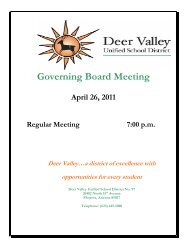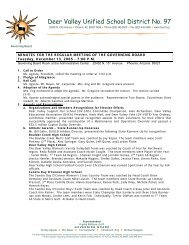Disability Awareness Activity Packet
Disability Awareness Activity Packet
Disability Awareness Activity Packet
You also want an ePaper? Increase the reach of your titles
YUMPU automatically turns print PDFs into web optimized ePapers that Google loves.
© 2006 Possibilities, Inc.<br />
More Than 60 Percent of U.S. in Drought<br />
By JAMES MacPHERSON, AP<br />
STEELE, N.D. (July 29) - More than 60 percent of the United States now has abnormally<br />
dry or drought conditions, stretching from Georgia to Arizona and across the north<br />
through the Dakotas, Minnesota, Montana and Wisconsin, said Mark Svoboda, a climatologist<br />
for the National Drought Mitigation Center at the University of Nebraska at Lincoln.<br />
A farmer attempts to harvest the shriveled up wheat in his drought-stricken field near Linton,<br />
N.D. An area stretching from central North Dakota to central South Dakota is the most<br />
drought-stricken region in the nation, climatologists say.<br />
An area stretching from south central North Dakota to central South Dakota is the most<br />
drought-stricken region in the nation, Svoboda said.<br />
“It’s the epicenter,” he said. “It’s just like a wasteland in north central South Dakota.”<br />
Conditions aren’t much better a little farther north. Paul Smokov and his wife, Betty, raise<br />
several hundred cattle on their 1,750-acre ranch north of Steele, a town of about 760 people.<br />
Fields of wheat, durum and barley in the Dakotas this dry summer will never end up as<br />
pasta, bread or beer. What is left of the stifled crops has been salvaged to feed livestock<br />
struggling on pastures where hot winds blow clouds of dirt from dried-out ponds.<br />
Some ranchers have been forced to sell their entire herds, and others are either moving<br />
their cattle to greener pastures or buying more already-costly feed. Hundreds of acres of<br />
grasslands have been blackened by fires sparked by lightning or farm equipment.<br />
“These 100-degree days for weeks steady have been burning everything up,” said Steele<br />
Mayor Walter Johnson, who added that he’d prefer 2 feet of snow over this weather.<br />
Farm ponds and other small bodies of water have dried out from the heat, leaving the<br />
residual alkali dust to be whipped up by the wind. The blowing, dirt-and-salt mixture is<br />
a phenomenon that hasn’t been seen in south central North Dakota since the Dust Bowl of<br />
the 1930s, Johnson said.<br />
North Dakota’s all-time high temperature was set here in July 1936, at 121. Smokov, now 81,<br />
remembers that time and believes conditions this summer probably are worse.<br />
“I could see this coming in May,” Smokov said of the parched pastures and wilted crops.<br />
“That’s the time the good Lord gives us our general rains. But we never got them this year.”<br />
Brad Rippey, a federal Agriculture Department meteorologist in Washington, said this<br />
year’s drought is continuing one that started in the late 1990s. “The 1999 to 2006 drought<br />
ranks only behind the 1930s and the 1950s. It’s the third-worst drought on record - period,”<br />
Rippey said.<br />
1





